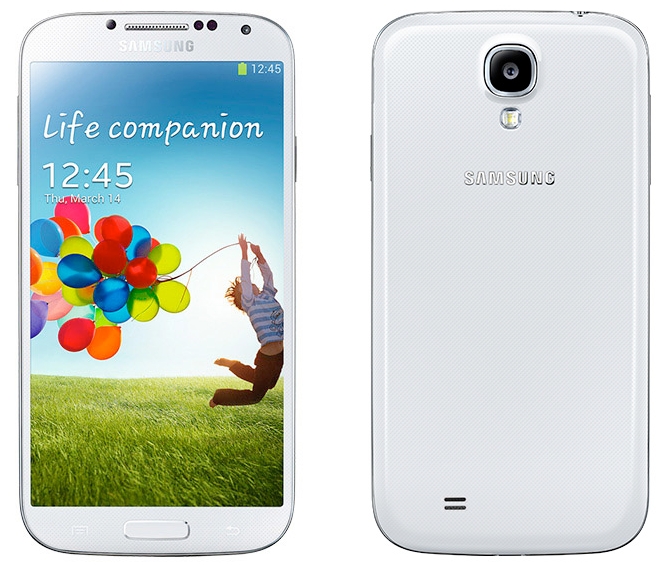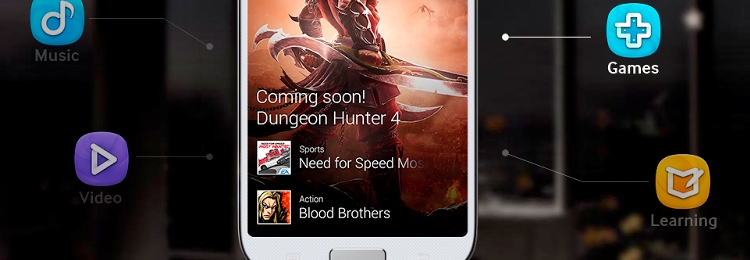
Now comes the hard part about being king - staying on top. If the Galaxy S III was Samsung's crowning achievement, the Galaxy S 4 is the first defense of the throne.
Arriving on the heels of one rival's flagship and a few months before the expected unveiling of another's, the Galaxy S 4 will prove whether Samsung is continuing its trend of advancement or becoming just as predictable as the old guard that it mocked. So naturally we must ask: just how good is the Samsung Galaxy S 4?
Hardware & Design
You may have noticed that this is the Galaxy S 4 - not the Galaxy S IV as many expected. The change from Roman numeral branding to a modern numbering system is no accident. The Galaxy S 4 is unmistakably a continuation of its previous design, but it's a sleeker and more current version of it. The phone is familiar but new. The round corners of the Galaxy S III are still apparent, but the frame of the S 4 looks as if were stretched to take on a thinner shape. In reality, the size is nearly identical at 136.6 x 69.8 x 7.9mm (5.4 x 2.7 x 0.31in). The small adjustment makes for a prettier build and an even bigger screen that has been bumped up to 5 inches.
A flat border connected to a hard silver ring has replaced the nature-inspired flowing bezel and edge of the S III. The back and front of the phone are glossy plastic that feels seamlessly smooth. The only break in that fluidity comes in the form of the hardware Home button near the bottom of the device. The button is thin and sticks out from the phone yet requires a little more force to be pressed than Samsung phones typically require. It is sandwiched between a Menu and Back button that only appear when the screen is touched.

A power button is on the right side, thin volume buttons lay on the left, a 3.5 mm headphone jack and an IR LED controller are at the top of the phone, and an MHL-enabled micro USB port is at the bottom.
The back of the phone houses a speaker that reaches a high volume of average sound quality. On the top left corner rests a notification light for pending alerts.
Performance & Key specs
Though Samsung promised that its octa-core processor would appear in phones this year, the U.S. version of the Galaxy S 4 features a 1.9 GHz quad-core Qualcomm Snapdragon 600. Having one quad-core processor is not a letdown because the Snapdragon is ridiculously fast, efficient, and powerful.
Key specs
- 4G LTE and Wi-Fi 802.11 a/b/g/n/ac
- IR LED Remote Control
- MHL 2.0, NFC, and Bluetooth 4.0 (LE)
- High-sensitivity glass that works with gloves
The 2GB of RAM and excellent 3D rendering never led to moments that I thought that the phone was sluggish. Gaming capabilities are also strong. The Unreal Engine-powered Horn and racing game Riptide both play with great speed.
Samsung sells the Galaxy S 4 in 16GB, 32GB, and 64GB variants. Samsung's software eats up 6GB of the ROM, so only about 9.7 GB of space is actually available in the base 16GB version we're testing today. This limitation proved troublesome once I downloaded a few games and quickly ran out of space when adding a portion of my music collection. Storage can be increased with a 64GB-capable microSD slot.
Screen Quality
There are no surprises when it comes to the Galaxy S 4 display. The 5-inch Super AMOLED Plus display is just as good - or bad depending on your preference for display technology - as every other AMOLED Plus screen. Colors have high contrast and saturation, so reds can really pop in a way that's typically not seen when using other screen types. The downside is that the white balance isn't as true to color as it is on IPS displays.

Even at maximum brightness, white backgrounds have a tint that makes it slightly off from ideal settings. Super AMOLED Plus has its drawbacks, but the 1080p HD resolution still looks beautiful thanks to warm, sharp images and text that looks fantastic. It also performs well outdoors if brightness is set to 100 percent.
